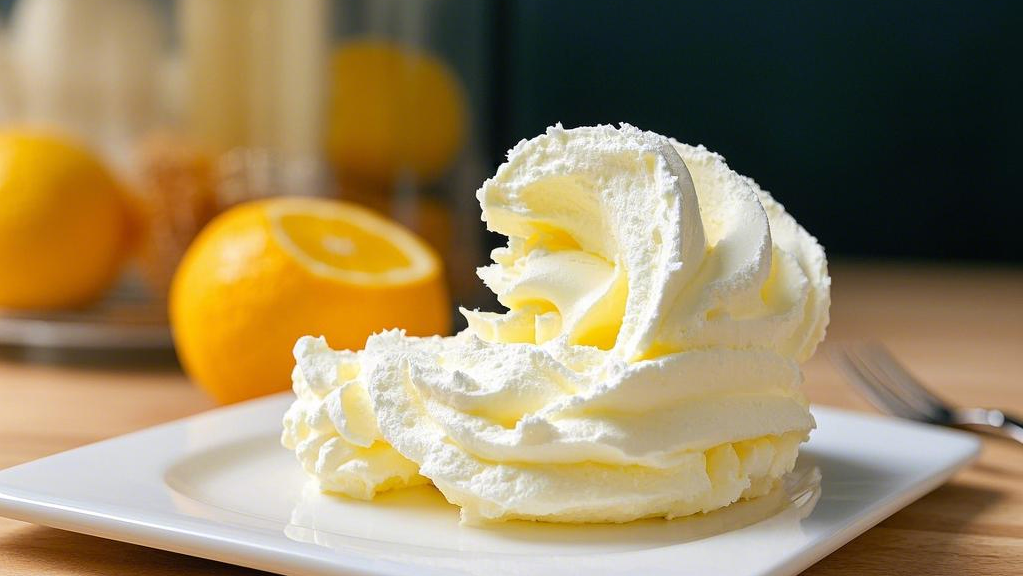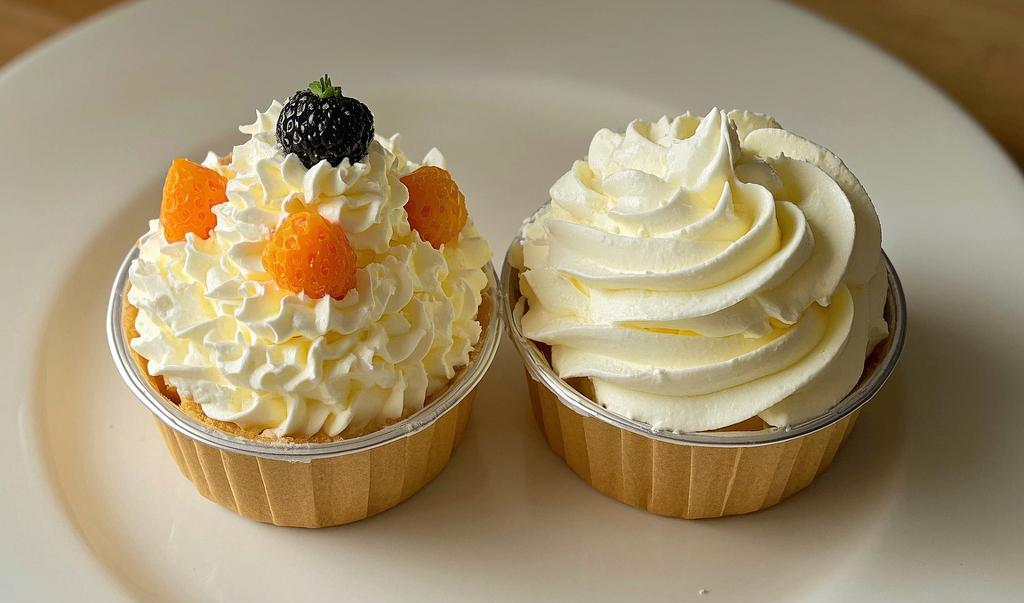Cream plays a crucial role in baking, dessert making, and the food industry, with its type directly impacting taste, health considerations, and cost. In recent years, animal cream has seen a 12% growth due to the “clean label” trend, while vegetable cream dominates 65% of the market due to cost advantages (Statista, 2024). This article analyzes the composition, health concerns, and application scenarios of both types of cream, helping industry professionals balance taste, health, and cost scientifically.
Animal cream is primarily composed of natural milk fat, offering a rich taste but at a higher cost and requiring low-temperature storage, making it ideal for premium desserts. Vegetable cream, on the other hand, is cost-effective and highly stable, widely used in commercial baking, though some products contain trans fats. In terms of health, animal cream is rich in fat-soluble vitamins but high in saturated fats, while vegetable cream is cholesterol-free but may contain additives.

I. Origin & Composition: Natural Dairy Fat vs. Industrial Synthesis
1. The Essence of Animal Cream—A Concentrated Dairy Extract
Production Process:
Animal cream is produced by separating milk fat from whole milk through centrifugation, with fat content typically ranging from 30% to 42% (e.g., Président cream from France contains 35.1%). The remaining components include water, milk proteins, and trace lactose.
Key Processing Points:
- Low-temperature pasteurization (72°C for 15 seconds) preserves flavor and prevents high-temperature damage to milk fat structure.
Ingredient Label:
- High-quality animal cream contains only “cream” or “milk fat” as ingredients. Some brands add stabilizers (e.g., carrageenan) for longer shelf life but avoid artificial flavors and colors.
Global Production Differences:
- Europe: High milk fat content (35%-42%), strict regulations banning stabilizers, offering rich taste but shorter shelf life (e.g., Parmalat from Italy).
- North America: Allows stabilizers like carrageenan, with fat content between 30%-36%, making it more suitable for commercial transport (e.g., Horizon Organic from the U.S.).
2. The Truth About Vegetable Cream—The Transformation of Hydrogenated Oils
Production Process:
Vegetable cream is made using low-cost vegetable oils (75% of global supply comes from palm oil), which undergo hydrogenation to convert liquid oils into semi-solid form. Emulsifiers (mono- and diglycerides), sweeteners (corn syrup), and artificial flavors (ethyl maltol) are added to mimic dairy fat texture.
Ingredient Risks:
- Trans Fats: Partial hydrogenation produces trans fats (WHO recommends <2.2g daily), increasing heart disease risks.
- Additive Controversy: The U.S. FDA banned partially hydrogenated oils in food (2020), but fully hydrogenated oils may still contain trace amounts of trans fats.
“Clean Label” Innovations:
Some premium vegetable creams use non-hydrogenated processes (e.g., enzymatic interesterification), replacing palm oil with shea butter and coconut oil, though this increases costs threefold (e.g., Béa vegetable cream from France).
II. Health Controversy: Scientific Data vs. Misconceptions
1. The Double-Edged Sword of Animal Cream
Benefits:
- Naturally rich in fat-soluble vitamins (A/D/E) and conjugated linoleic acid (CLA), which has anti-inflammatory and fat-reducing properties (Nature, 2021).
- No trans fats, while milk proteins provide essential amino acids (e.g., leucine).
Risks:
- High saturated fat (57g per 100g), which may raise LDL cholesterol (American Heart Association recommends <13g daily).
- Lactose intolerance may cause digestive discomfort.
2. The Health Traps of Vegetable Cream
Marketing Misleading Claims:
Many brands promote “cholesterol-free” and “low-fat” claims while hiding the risks of trans fats and additives. For example, some popular vegetable cream labels claim “0g trans fats,” but their ingredient list includes “hydrogenated palm kernel oil” (regulations allow ≤0.5g per serving to be labeled as zero).
Long-Term Health Risks:
- Cardiovascular Disease: Trans fats increase LDL by 21% and reduce HDL by 18% (New England Journal of Medicine).
- Metabolic Disorders: Artificial sweeteners are linked to insulin resistance (Diabetes Care, 2022).
3. Recommendations from Authorities
- WHO: Calls for global elimination of industrial trans fats by the end of 2023.
- EU: Limits trans fats in food to ≤2g per 100g fat.
- Solution: Use cream chargers to increase the whipping volume of animal cream (reducing usage) or opt for non-hydrogenated vegetable cream.

III. Application Scenarios: Taste, Efficiency & Business Costs
1. Animal Cream—The Soul of Premium Desserts
Taste Advantage:
Milk fat provides a silky texture and natural dairy aroma, ideal for desserts that emphasize ingredient purity (e.g., Mont Blanc, Tiramisu).
Operational Challenges:
- Long whipping time (15 minutes by hand), low stability (melts within an hour at room temperature).
Solution:
Using cream chargers with a whipped cream dispenser reduces whipping time to 30 seconds and enhances foam structure, maintaining shape for over 4 hours.
2. Vegetable Cream—The King of Cost-Effective Commercial Baking
Industrial Advantages:
- High whipping yield (1L of vegetable cream = 3L of whipped animal cream), resistant to high-temperature transport (e.g., wedding cake delivery).
- Costs only 1/3 of animal cream (e.g., King Diamond vegetable cream costs ¥25/kg vs. animal cream at ¥75/kg).
Balancing Health & Consumer Perception:
A survey showed that 62% of customers are willing to pay 20% more for “additive-free cream” (Food Navigator, 2023).
3. The Innovation of Cream Chargers
Technology Principle:
Nitrous oxide (N₂O) creates microbubbles in cream, increasing fat surface contact, boosting animal cream whipping yield by 40%, and reducing sugar content.
Application Cases:
- Chain Coffee Shops: Starbucks uses cream chargers to whip animal cream, cutting latte foam preparation time from 5 minutes to 1 minute.
- Home Baking: Japan’s Bruno home cream dispensers allow beginners to create stable whipped decorations effortlessly.
IV. A Sustainable Future: Environmental & Industry Trends
1. The Carbon Footprint Challenge of Animal Cream
- Producing 1kg of milk fat emits 12.1kg of CO₂ (3x higher than vegetable cream) and consumes 15,000L of water (Science, 2020).
- Improvement: Methane capture technology and algae-based feed to reduce dairy farm emissions.
2. The Green Potential of Vegetable Cream
- Palm Oil Controversy: Overplanting leads to deforestation, but RSPO-certified sustainable palm oil now accounts for 35%.
- Innovative Raw Materials:
- Microbial fermentation fats (e.g., Perfect Day’s animal-free dairy fats).
- Upcycled nut residues (e.g., Rubies in the Rubble’s cashew-based cream).
3. The Environmental Contribution of Cream Chargers
- Reduces cream waste by precise portion control, preventing spoilage.
- Recyclable gas canisters reduce carbon footprint by 60% compared to single-use packaging.

V. Scientific Selection Guide: 5-Step Decision-Making
- Clarify Needs: Home baking prioritizes health, commercial settings prioritize cost.
- Read Labels:
- Animal Cream: Look for “Cream” or “Butterfat.”
- Vegetable Cream: Avoid “Hydrogenated” and “Palm Kernel Oil.”
- Performance Testing:
- Animal cream should have a silky sheen after whipping.
- Vegetable cream should not separate after 2 hours at room temperature.
- Cost Calculation: Include wastage rates when assessing per kg cream costs.
- Healthy Alternatives: 70% animal cream + 30% coconut-based vegetable cream.
VI. Conclusion
The competition between animal and vegetable cream reflects the balance between natural ingredients and food industry innovation. By integrating cream charger technology, we enhance the purity of animal cream while improving its usability and push vegetable cream toward additive-free, sustainable solutions.
Try Cream Buffet Cream Chargers today!